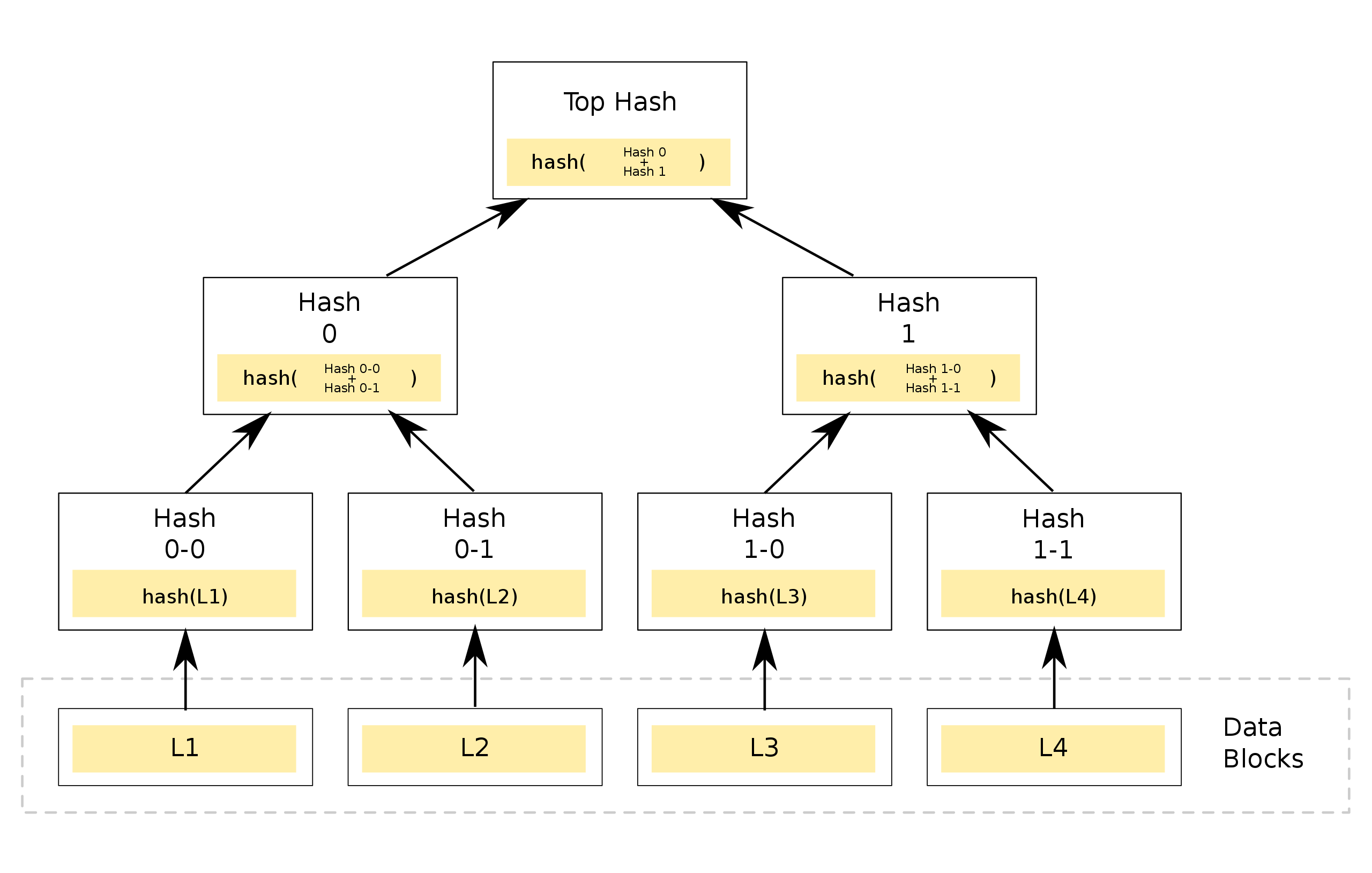https://en.wikipedia.org/wiki/Merkle_tree
A Merkle tree is a binary tree where each node's value is calculated by concatenating and hashing both of it's child leaves: sha256(left_child + right_child).
Uninitialized leafs should have the value of a hash of an empty string: sha256('').
From the diagram:
// Leaf hashes are initialized from the data
hash00 = sha256(l1)
hash01 = sha256(l2)
hash10 = sha256(l3)
hash11 = sha256(l4)
// Next level is calcualted based on the previous level
hash0 = sha256(hash00 + hash01)
hash1 = sha256(hash10 + hash11)
// Root is calucalted based on it's two child nodes
root = sha256(hash0 + hash1)
Create a data structure representing a fixed-height Merkle tree in-memory with the following API:
func NewMerkleTree(height uint) *MerkleTree
// Returns the height of the Merkle tree
func (m *MerkleTree) GetHeight() uint
// Returns the value at the root now of the Merkle tree
func (m *MerkleTree) GetRoot() Hash
// Sets the value of a leaf node (bottom-most level).
// Leafs are indexed left-to-right starting from 0.
// All of the hashes in the tree have to be updated according to the new data.
func (m *MerkleTree) SetLeaf(index uint, hash Hash)Write unit-tests to cover those API methods.
For hashing you can use the go-ethereum packages:
import (
"github.com/ethereum/go-ethereum/common"
"github.com/ethereum/go-ethereum/crypto"
)
func HashTwo(a, b common.Hash) common.Hash {
buf := make([]byte, 64)
copy(buf[0:32], a.Bytes())
copy(buf[32:64], b.Bytes())
return crypto.Keccak256Hash(buf)
}